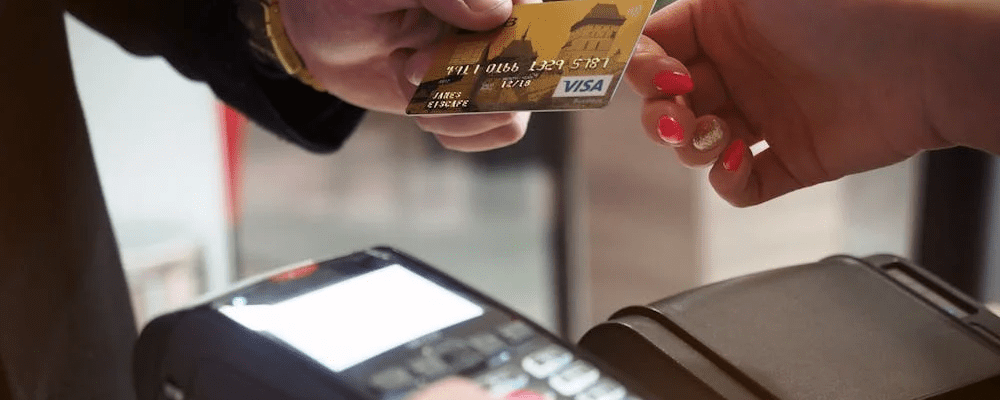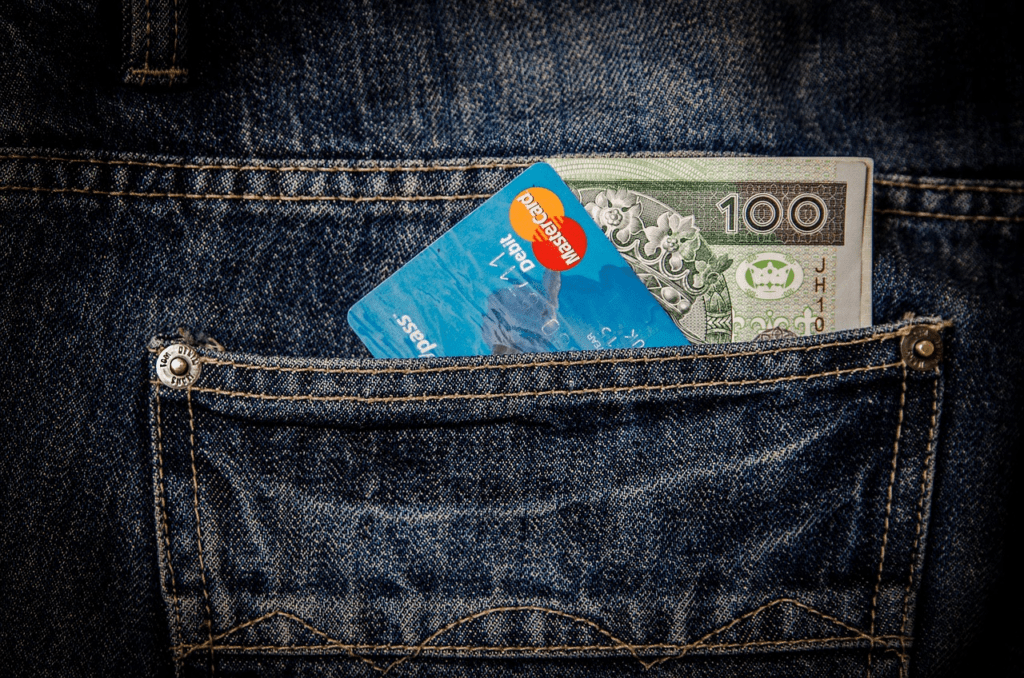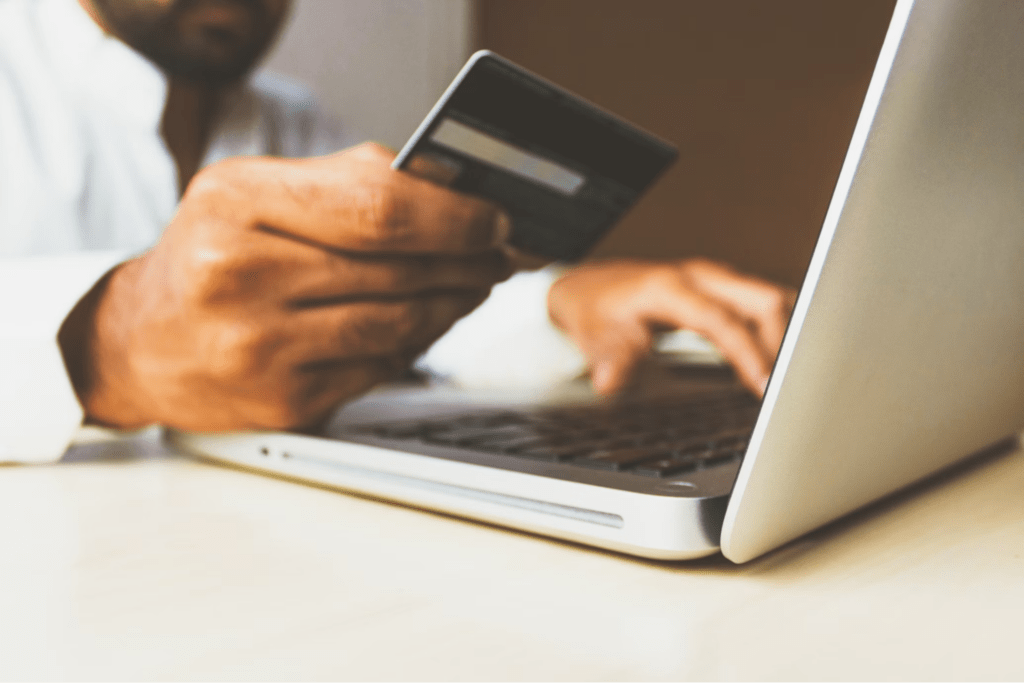
The Federal Trade Commission (FTC) filed over 380,000 cases of credit card fraud in 2021, and this crime rate is still climbing. AFP recorded a 15% increase in fraud attacks between 2022 and 2023, placing credit card fraud as one of the most popular types of financial cybercrime in the United States.
Learning how to avoid credit card fraud is crucial since fraudsters are constantly sharpening their skills and developing new tactics to defraud unsuspecting credit card owners. In this article, we explain how to prevent credit card fraud, how to detect it, and what to do if it occurs.
What Is Credit Card Fraud and How Does It Occur?
Credit card fraud is a fraudulent activity that involves the unauthorized withdrawal of money using a victim’s credit card information. It may also involve fraudsters using the card to pay for their personal online purchases.
Fraudsters typically steal credit card information using a card skimmer, but they could also steal the physical card and use it for unauthorized withdrawals and purchases. Other times, they use the victim’s financial information to open a new credit card.
Falling victim to credit card fraud could put you at risk of incurring unauthorized charges, resulting in unwanted bills. Your credit scores may also take a hit as a result. Understanding how credit card fraud occurs makes you better equipped to prevent it.
How Credit Card Fraud Happens

Bad actors obtain your card information through any of the following methods and then use it to commit the crime:
| Tactic | How It Happens |
| Credit card theft | The bad actor takes a physical credit card that doesn’t belong to them. They could steal it from the owner’s purse or the mail or find a lost card and take it |
| Card skimming | The fraudster installs a card skimmer at a point of sale (POS) terminal, usually a gas station pump or ATM, and skims the card details |
| Device hacking | The fraudster hacks into your phone or personal computer to steal and use your card information |
| Phishing attempts | They could send fake emails posing as legitimate businesses and request your card information to offer you “assistance” |
| Shoulder surfing | Fraudsters may peep over your shoulder and memorize the card info, or discreetly take a picture of the card details for later use |
| Wi-Fi interception | Hackers use the so-called man-in-the-middle attack to access your account numbers and passwords when you log in using a public Wi-Fi |
Being aware of how credit card fraud occurs does not make you immune to these tactics, but it will help you become more cautious and reduce your chances of falling victim to it.
7 Ways To Prevent Credit Card Fraud
Most credit card companies usually offer zero-liability policies, which means you won’t be responsible for unauthorized charges to the account. Even if your card issuer has no zero-liability policy, the Fair Credit Billing Act (FCBA) limits your charges to $50 if you report fraud within 60 days.
Still, many other hassles come with falling victim to credit card fraud, including a privacy breach, potential identity loss, account freeze and credit card theft report, and so much more. To avoid dealing with the stressful aftermath of credit card fraud, here’s how to protect yourself from credit card fraud:
- Keep your physical credit card safe
- Make credit card transactions on secure websites only
- Check websites for scam signals before sharing your card details
- Protect your devices at all times
- Pay attention to spot phishing activities
- Always protect hard copies of sensitive financial information
- Set a payment limit on your credit card
Keep Your Physical Credit Card Safe

Even though modern technology has made it easier for fraudsters to access your credit card information remotely, physical card theft still happens. If a thief gets a hold of your physical card, they can clone it, use it to pay for their purchases, or commit other types of crime.
Here’s how to prevent credit card theft and keep your card safe:
- Keep your wallet or purse close by—When in public, avoid leaving your belongings unattended. Don’t keep your wallet in your car or back pocket, or they’ll be at risk of being stolen
- Only take cards you need—If you carry too many cards when you go out, you may not notice if one is missing. Only take the necessary cards you’ll likely need in your outing
- Be present during all card transactions—Don’t allow store personnel to take your card out of your view to make a transaction. They can steal your details if you’re not present
- Keep conversations about your card private—Never read the credit card numbers out loud in public. Someone else may be listening and writing down the details
Make Credit Card Transactions on Secure Websites Only
Credit card transactions are one of the most popular payment methods in the U.S. for e-commerce transactions. This makes these types of websites a breeding ground for fraudulent activities. To protect yourself from such risks, it’s important to always be wary of unsecured e-commerce sites.
Secure websites protect visitors from hack attacks by encrypting the site using specific security features. Here’s how you can tell if a site has these features:
- Look out for a padlock in the address bar—On the left side of most browsers’ address bar, you’ll find a small padlock symbol that signifies a secure site. If you can’t find it, click on the symbols beside the website URL to see if it’ll pop up. A site with no padlock can easily be intercepted by scammers to steal your credit card information
- Look out for “https”—Unlike http, the “s” indicates that the site is secure and uses a Secure Sockets Layer (SSL) to scramble your data and keep your information safe even if a website breach occurs
Sadly, many scam websites now incorporate these security features, but there are other ways to check if a site is not secure. See them in the section below.

Check Websites for Scam Signals Before Sharing Your Card Details
Many scam websites have some tell-tale signs that indicate they are fraudulent. Unlike real e-commerce sites, scam websites use multiple aggressive pop-ups to trick visitors into inputting their credit card details.
These sites are difficult to navigate and have numerous flashy promotions to lure you in. The promotions are usually fake and designed to get you to fall into their trap. It is also possible that clicking on any of the hyperlinks or offers could install malware on your device, giving the fraudsters access to your sensitive data.
To stay on the safe side, never input your credit card information on any site that shows these warning signals.
Protect Your Devices at All Times
Hackers are constantly developing new methods to interfere with the credit card transactions of unsuspecting users. One of the ways they do this is by intercepting electronic transfers as details are being parsed from server to server. To prevent this from happening, you can set up the following protective measures:
- VPN—A virtual private network (VPN) protects your IP address and encrypts your electronic information during transfers. It keeps your connection to the internet more secure so you can evade fraudsters lurking on the web
- Password Manager—Use a secure password manager like Google’s Password Manager to create unique passwords for your financial accounts. These tools create hard-to-crack passwords, protecting your accounts from hackers trying to break in
Pay Attention To Spot Phishing Activities
Phishing emails, texts, and calls usually follow a similar pattern. They offer unsolicited assistance or freebies, asking you to share your credit card information. If you’re unsure whether the brand or entity that reached out to you is legitimate, look out for the following:
- Incorrect email addresses—Check that the sender’s email address is from a legitimate brand. Look out for the wrong spelling of the brand or organization name. For example, check that it’s from @amazon.com and not “@amazom.com.” Ensure that the email comes from an official domain and not Gmail or Yahoo
- Urgency tactics—Most scam emails use threats and other scare tactics to coerce you into doing their bid. For example, they could say you stand a risk of losing the prize or offer if you don’t share your card details
- Poor grammar and spelling—Most fraudsters are not careful to use correct grammar in their emails, so most phishing emails are ridden with typos, grammatical blunders, and spelling errors
If you notice any of these tell-tale signs, you’re likely dealing with a fraudster.
Always Protect Hard Copies of Sensitive Financial Information
Fraudsters do more than card skimming to retrieve your financial information. They often search through garbage or mail for sensitive information they can steal and clone.
Avoid leaving mail in your mailbox, especially if you’re expecting your credit card from the postal service. When you receive your financial information, such as your account statements, bills, or checks from the mail, always check to ensure it has not been tampered with.
When disposing of financial or personal information, always shred the documents. Make sure that the parts that contain your private details cannot be recovered.
Set a Payment Limit on Your Credit Card
Credit cards make it easy to set a limit when withdrawing at POS machines, ATMs, or contactless and online payments. Usually, the limit is set to the maximum amount on the card, but if the card is hijacked by fraudsters, you risk loss.
Instead, set a limit on the card for the minimum amount you need for daily transactions. This reduces the potential financial loss if a mishap occurs.
How To Detect Credit Card Fraud
Taking steps to prevent credit card fraud does not 100% guarantee your security. You still need to be vigilant to detect fraudulent activities and minimize the aftermath quickly. If it happens, here’s how you can detect it:
- Frequently review your account statements to find unauthorized or suspicious charges. The average person initiates multiple credit card payments daily, and hidden within them may be fraudulent transactions. Carefully comb through the statement to identify any expenses that you didn’t authorize
- Set up mobile alerts to notify you whenever a transaction is made with your card or if a debit is made with your card and the amount exceeds your typical spending limit
- Look out for red flags on your account like charges from foreign countries or locations, small frequent charges from a business you don’t recognize, or multiple declined transactions that could be from fraudsters
If you see or suspect any unauthorized activities on your account, follow the steps outlined below immediately.
What To Do if You Fall Victim to Credit Card Fraud

If you fall victim to credit card fraud, there are steps you can take to mitigate the damage. Here’s how to minimize credit card fraud impact:
- Immediately contact your card issuer—Visit your card issuer’s website to find their contact number or online form and report the fraud. If you still have your physical card, call the number on the back of the card to make a report. They’ll immediately freeze your card and start an investigation
- Change your password—Update the password attached to your credit card account and change your security questions since the account may be compromised. Use a strong password or enable multifactor authentication on the account if possible
- Set a fraud alert on your credit—Contact any of the major credit bureaus to place a fraud alert on your credit report. This way, credit card companies must verify your identity before an account can be opened in your name
- Report to the police and FTC—File a report with your local police’s fraud department as this file will help with your investigation. Take the steps recommended by FTC to recover your identity
- Move your funds to a fraud-protected solution—If your credit card account is breached, your other financial accounts are vulnerable to further attacks, and fraudsters can drain them in seconds. Move your business cash reserves and personal savings to a high-security account like FortKnox that keeps you safe from scammers and is impenetrable to fraud attacks




